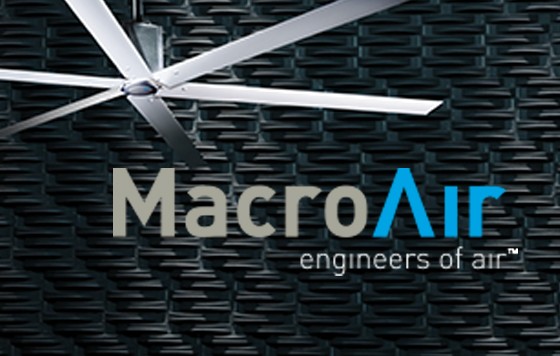Creating a comfortable working environment is of the utmost importance to businesses in any industry. However, keeping industrial and agricultural facilities cool in the summer and warm in the winter can be an especially difficult task, as these buildings are often large with high ceilings and a lot of open space. In these conditions in particular, traditional heating and cooling systems are expensive and ineffective at maintaining a consistent and comfortable temperature, and often create a temperature differential where temperatures vary from floor to ceiling by as much as fifteen degrees or more.
Employees working in a hot and humid environment in the summer are often less productive, becoming fatigued faster and requiring extra breaks to rehydrate and cool down. In more serious cases, overheated employees can potentially suffer from heat exhaustion, heat cramps, and even heat stroke.
In agricultural industries, livestock can be just as susceptible to heat-related health issues, including heat stress and stroke. Maintaining the optimal body temperature within an animal’s specific tolerance range can maximize the growth and health of livestock. And yet, during the heat of summer months, traditional heating and cooling and ventilation systems used in agricultural buildings do not sufficiently maintain the proper temperature range.
In industrial settings, heat and humidity can also cause damage to sensitive equipment and industrial machines, causing them to overheat and require expensive repairs. Additionally, running large equipment can create extra heat, which causes energy usage to spike dramatically during hot summer months as air conditioning attempts to cool the environment.
Stored products can also be adversely affected by the heat and humidity in these large buildings. Especially sensitive are perishable products, however drastically changing temperatures and varying humidity levels can also affect other products, as well.
When traditional heating and cooling solutions aren’t working, MacroAir high volume low speed (HVLS) fans can be used alone or in conjunction with existing ventilation and heating and air conditioning systems to create a more consistent and more comfortable environment.
For example, in environments where air conditioning is not feasible or possible, HVLS fans provide an efficient and cost-effective alternative, creating a gentle breeze and pleasant open-air environment. When used in conjunction with air conditioning systems, HVLS fans can significantly reduce cooling costs. Under moderate heat conditions, they can be run without any air conditioning, cutting operating costs as much as 90% versus air conditioning. On hot days, they can be run with the thermostat set 10 to 15 degrees warmer while still achieving an equivalent cooling effect.
Additionally, during winter months, rising heat can create a temperature differential in excess of 15 degrees from ceiling to floor. To address this variance in temperatures, HVLS fans are designed to effectively combine elevated heat with cool air at the floor level. This de-stratification of uneven temperatures at varying levels in a building provides a more comfortable, uniform temperature while saving money on heating costs.
So in large industrial and agricultural buildings, where traditional heating and cooling solutions are both expensive and ineffective, MacroAir Technologies can offer an HVLS solution to keep your employees and livestock safe and your equipment and products free from expensive damage caused by heat and humidity.
For more information about MacroAir and using HVLS fan technology as an alternative or enhancement to traditional heating and cooling systems, visit: www.macro-air.com.
Macro-Air Technologies
P: (909) 890-2270
Jaylin Krell, Director of Public Relations
jkrell@macroair-ca.com





















